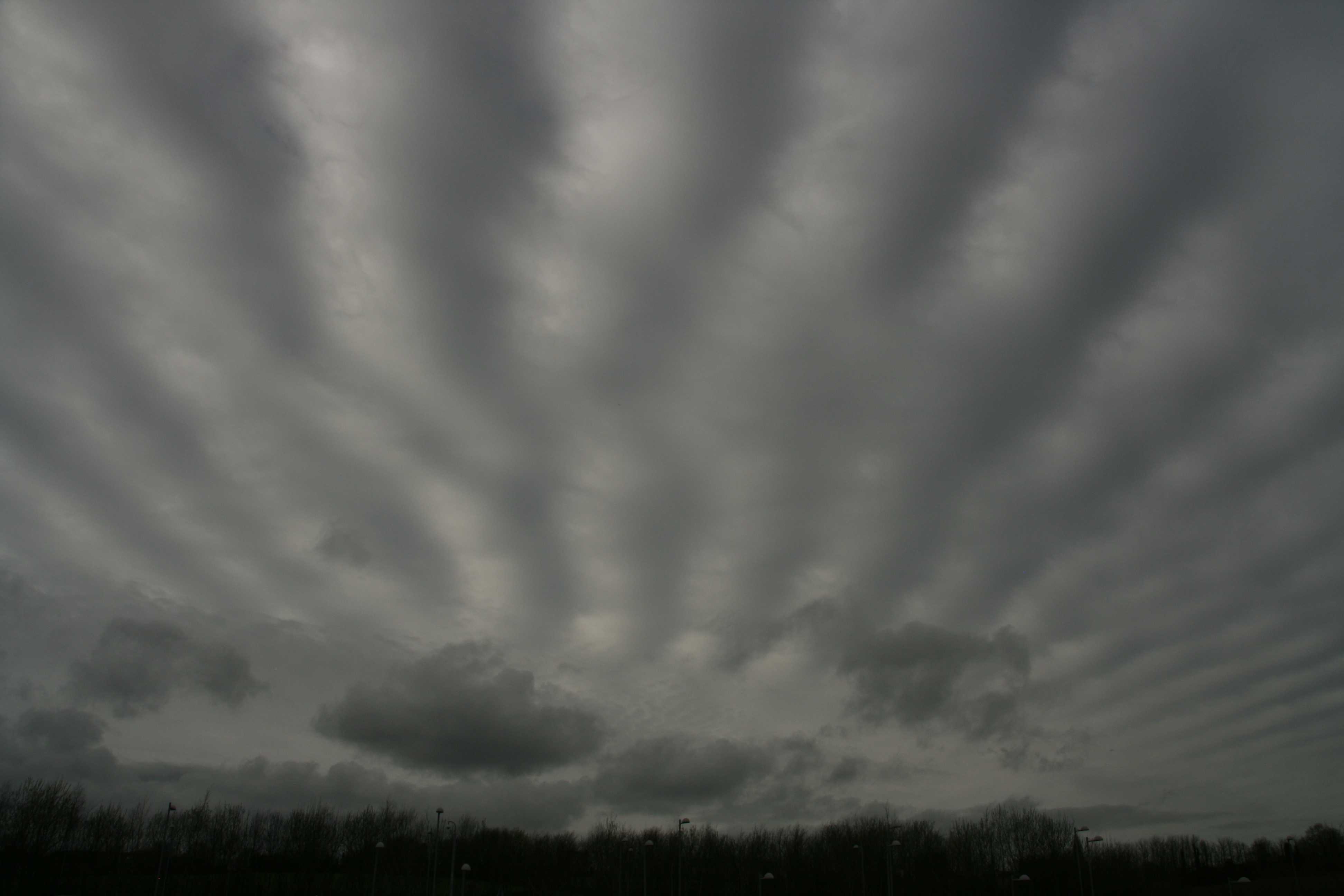Clouds from which Stratocumulus may form
(Section 2.3.7.5)Stratocumulus may evolve:
- From Altocumulus when the small elements grow to a sufficient size (Sc altocumulomutatus)
- Sometimes near the base of Altostratus, as a result of turbulence or convection in the layers moistened by evaporating precipitation (Sc altostratogenitus)
- More often near the base of Nimbostratus, as a result of turbulence or convection in the layers moistened by evaporating precipitation (Sc nimbostratogenitus)
- From the thinning of Nimbostratus, signifying the end of a rain event (Sc nimbostratomutatus)
- From the lifting of a layer of Stratus (Sc stratomutatus)
- From the convective or turbulent transformation of Stratus, with or without a change of height (Sc stratomutatus)
- By spreading of the tops of Cumulus when they reach a stable layer (Sc cumulogenitus); usually the middle to upper part of the Cumulus gradually widens in proximity to the stable layer. The vertical development of Cumulus may:
- Cease at the stable layer, resulting in patches of Stratocumulus spreading out from the top of the Cumulus; often the Cumulus dissipates completely from the base upwards
- Temporarily stop at the stable layer and then resume growth in places or throughout, resulting in Stratocumulus on the side(s) of the Cumulus
- From Cumulus (Sc cumulogenitus) when towers lean and spread or are detached and spread due to strong wind shear
- From Cumulus (Sc cumulogenitus) when convection ceases in the late afternoon and evening and the domed tops of the Cumulus clouds flatten
- By the spreading out of Cumulonimbus (Sc cumulonimbogenitus). Stratocumulus may be observed on or near the sides of Cumulonimbus and often forms while the Cumulonimbus is still in the Cumulus stage; nevertheless, the Stratocumulus is classified as cumulonimbogenitus, not cumulogenitus
- By the spreading out of some of the lower parts of an existing Cumulonimbus (Sc cumulonimbogenitus)
Cumulus or Cumulonimbus towers can also pass through a pre-existing layer of Stratocumulus formed independently of them. When this occurs:
- The Cumulus or Cumulonimbus do not widen upward towards the Stratocumulus layer
- A thinned or even a cleared zone frequently appears in the Stratocumulus around the cumuliform towers




